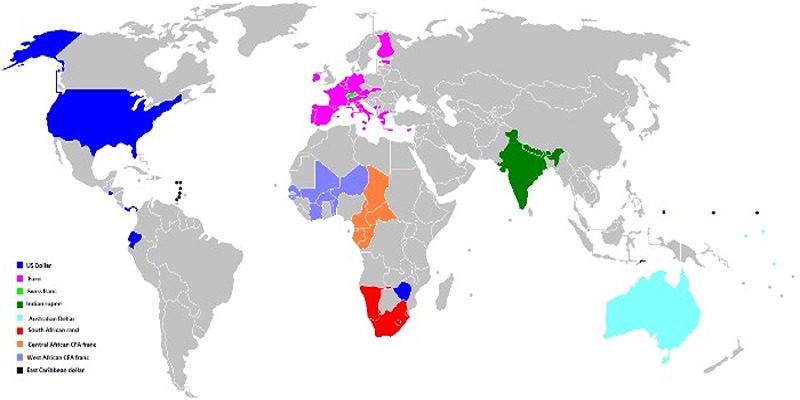Are you looking to understand the difference between direct and variable costs? As business owners, we must understand the expenses of producing goods or services, including fixed and variable costs.
In this blog post, we'll discuss each cost type and how it can affect your organization's profitability. We'll also explore some strategies for tracking them for maximum efficiency. With this information in hand, you should have a better idea about which type of cost has more impact on your bottom line. So read on to learn more about direct vs variable costs!
Direct Costs
Direct costs are expenses attributed directly to a specific product or service. These costs remain relatively consistent over time, including the cost of raw materials used in production, labor associated with producing the product, and shipping out the goods to customers. Direct costs don’t typically fluctuate much unless there is some major change in production volume or process, such as an increase in demand for a particular product.
Direct costs are often categorized into direct material, labor, and overhead. Direct material costs refer to purchasing raw materials needed for production, like ingredients in food items or parts used to produce mechanical goods.
Direct labor cost refers to wages paid to workers who produce the item or service, and direct overhead costs are those associated with the actual production process, like rent, utilities, etc. When all three types of costs are included, it is referred to as the “total cost” for a particular product or service.
Pros and Cons of Direct Costs
Pros
- They are easier to track because they can be attributed to a specific product or service.
- They can help budget the production process since they are consistent over time.
- It can provide insight into how efficiently the production process is being run.
- Allows you to make decisions quickly based on historical data about cost increases or decreases relating to certain products or services.
- It can be used to better understand profit margins.
- It can help provide information about customer demand, informing purchasing decisions and production levels.
- It can help organizations determine pricing structures that will be profitable or competitive in the marketplace.
- Helps identify any areas of excessive spending so they can be addressed quickly and efficiently.
- Gives you an idea of how much it would cost to outsource production if needed.
Cons
- Only sometimes reflects true cost because some costs may not be included due to la ack of accurate tracking or accounting for them correctly.
- Changes in materials or labor costs over time can make it easier to predict total costs accurately by regularly reviewing and updating processes.
- Direct costs are only one aspect of the total cost of producing a product or service and should be considered alongside indirect costs to get a better understanding of overall expenses.
6 Examples of Direct Costs
1. Materials Costs
The cost of the raw materials used to produce a product or service, such as wood for furniture and fabric for clothing.
2. Labor Costs
Wages are paid to workers who assemble items or provide services associated with production, such as sewing machines in a garment factory or cooks in a restaurant.
3. Overhead Costs
The business costs are rent, utilities, insurance, etc.
4. Equipment Costs
The equipment cost is needed to produce an item, such as a printing press for t-shirts or computers for web design.
5. Shipping Costs
The cost of getting the finished product to customers, including transportation and packaging materials.
6. Advertising Costs
The cost associated with marketing activities, such as paying for newspaper ads or websites.
Variable Costs
Variable costs, on the other hand, are expenses that vary based on levels of production and demand for certain products or services. These types cannot easily be attributed to any particular product or service since they’re often related to general operations rather than individual items or services sold.
Pros and Cons of Variable Costs
Pros
- Provides a better understanding of the total cost of production since it includes costs outside of direct costs.
- It can help identify areas businesses can save money, such as cutting advertising costs or negotiating better terms with suppliers.
- Can give insight into customer demand by tracking changes in production and sales levels over time.
- Helps determine how much to charge for certain products or services to remain competitive in the market without sacrificing profits.
- Allows organizations to respond more to changing market conditions by quickly adapting prices and production processes.
- It’s easier to track than direct costs, which makes budgeting simpler and helps prevent overspending.
Cons
- Variable costs can be hard to predict because they fluctuate with changes in production levels or customer demand.
- Determining the exact cost of producing a particular product or service is difficult since variable costs are not typically attributed directly to individual items or services.
- Accurately tracking all variable costs can be challenging, making it harder for businesses to get reliable data about their true expenses.
- Variable costs may only sometimes reflect real needs and could lead organizations down an inefficient path if appropriate decisions are made based on incorrect information.
Examples of Variable Costs
1. Advertising and Promotion
Advertising and promotion costs vary widely depending on a company’s budget and promotional strategies.
2. Commissions
Sales commissions are typically variable since they depend on the sales made at any given time.
3. Freight and Shipping
Shipping costs can vary depending on the size and weight of products and the location being shipped to.
4. Raw materials
The cost of raw materials may fluctuate due to market fluctuations or other factors like shortages.
5. Sales personnel Salaries
Depending on the number of salespeople employed, salaries for sales personnel can be variable.
6. Utilities
Utility bills often fluctuate based on usage levels, so businesses should monitor them closely to ensure they remain within budget.
Direct and variable costs are important when managing a business’s expenses. While direct costs provide an understanding of the cost associated with producing specific products or services, variable costs give businesses insight into their overall operational costs. By tracking each type of cost carefully, businesses can make informed decisions that will lead to greater profitability and success in the long run.
FAQs
Q: What are the Benefits of Knowing the Difference Between Direct and Variable Costs?
A: Understanding how each cost type affects your bottom line is essential for making informed decisions. By tracking these costs, you can gain insight into which areas need more attention and where you can save money. Additionally, understanding your direct and variable costs will help you accurately estimate how much it takes to produce a product or provide a service to set realistic customer pricing. This knowledge also provides key information when budgeting for future projects.
Q: How Can I Track My Direct and Variable Costs?
A: Accounting software such as QuickBooks is the most efficient way to track expenses. This will allow you to easily categorize costs into the appropriate buckets and track them over time. You can also use spreadsheets to monitor your expenses, but this method may take more time. Additionally, it’s important to ensure that all your invoices and receipts are properly stored for easy reference when needed.
Q: What Are Some Strategies for Reducing Direct and Variable Costs?
A: There are many ways to reduce costs without compromising quality. Look for areas where supplier negotiations or bulk purchasing can lower your costs. Additionally, you can switch to more efficient machinery, eliminate unnecessary overhead expenses, and find other creative solutions that will positively impact your budget. Lastly, don’t forget to review your operating procedures regularly to identify potential cost savings.
Conclusion
Knowing the difference between direct and variable costs is essential to a successful business. By tracking these expenses carefully, you can make informed decisions that will lead to greater profitability. Additionally, staying on top of your spending can help you identify areas where you can save money. With this information, you should better understand how each cost type affects your bottom line and some strategies for reducing them without sacrificing quality or customer satisfaction.



